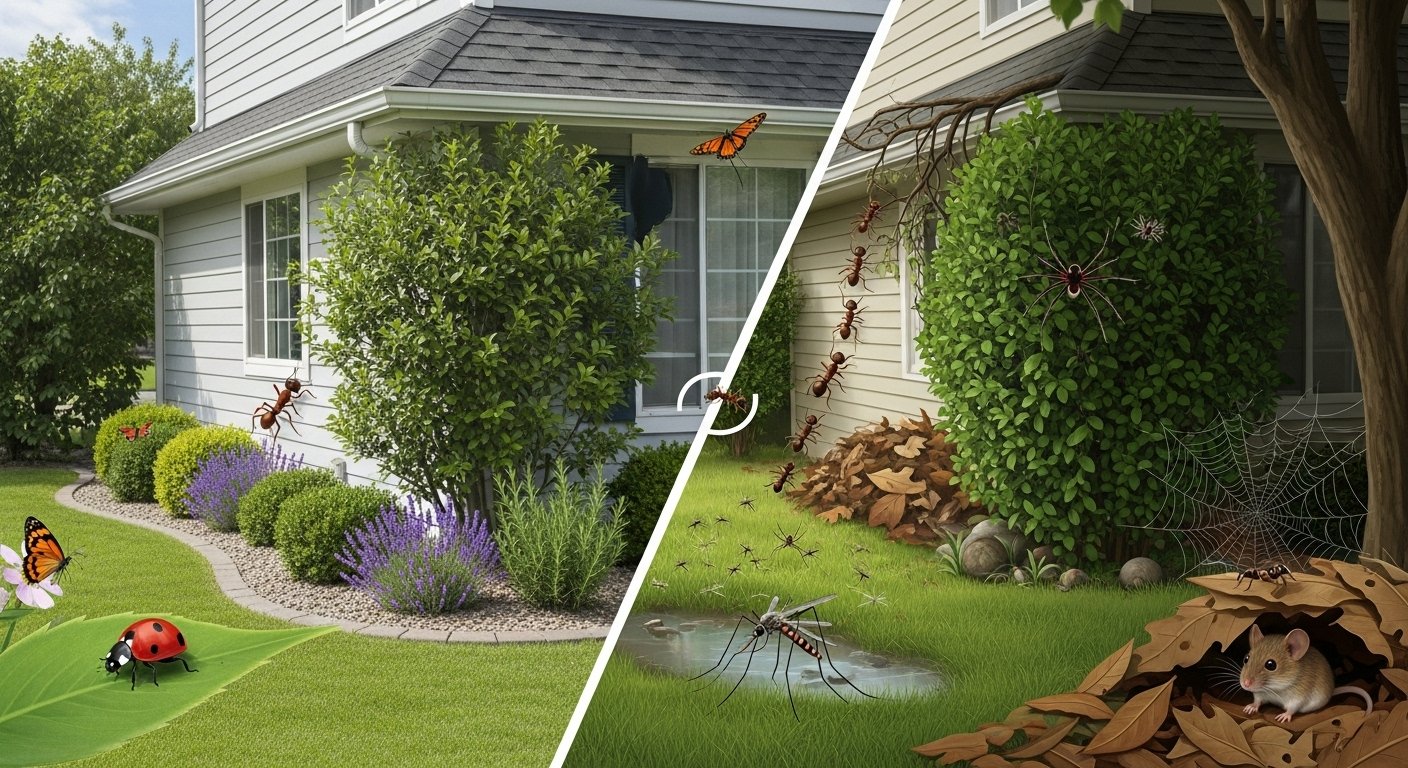Blog
How Landscaping Choices Affect Pest Activity Around Your Home

When most people think about landscaping, they picture curb appeal, shade, and outdoor living. What often gets overlooked is how landscaping decisions influence pest activity. The way plants, mulch, and water are arranged around a home can either deter or attract unwanted visitors.
This connection is easy to miss. A decorative flower bed or wood pile may look harmless, but for pests it can be an open invitation. Once established in the yard, insects and rodents often make their way indoors, creating larger problems.
Agile Pest Control highlights the importance of designing outdoor spaces with prevention in mind. By understanding how landscaping impacts pest behavior, homeowners can create yards that are both attractive and resistant to infestations.
Your Yard as the First Line of Defense
Before pests enter a home, they start outside. Overgrown vegetation, shaded areas, or excessive moisture provide shelter and food. From there, it is only a short distance to gaps under doors, cracks in siding, or unsealed vents.
Managing outdoor conditions reduces the chance of indoor infestations. In this sense, landscaping becomes part of a larger pest control strategy.
Plants That Attract and Repel Pests
Different plants have different effects on pest activity. Sweet-smelling flowers and fruit-bearing trees may attract ants, flies, and other insects. Dense shrubs and ground cover can provide shelter for rodents and nesting sites for insects.
On the other hand, some plants naturally repel pests. Lavender, mint, rosemary, and basil are known to deter mosquitoes and flies. Marigolds and chrysanthemums contain compounds that discourage certain insects. Integrating these plants creates natural barriers that support long-term protection.
Moisture and Drainage Problems
Water is one of the most powerful attractants for pests. Overwatered gardens, leaking sprinklers, and poor drainage create moist soil that appeals to termites and mosquitoes. Stagnant water is especially problematic, as it becomes breeding ground for insects.
To reduce risk, homeowners should:
- Ensure gutters and downspouts direct water away from the foundation.
- Avoid excessive irrigation near the house.
- Grade soil to prevent pooling.
- Use plants that tolerate dry conditions in damp areas.
Proper water management is both a landscaping priority and a termite control strategy.
Mulch: Useful but Risky
Mulch helps retain soil moisture and regulate temperature, but it also provides cover for pests. Termites, ants, and earwigs thrive in the shelter of thick, moist mulch layers.
To reduce risk:
- Keep mulch at least a foot away from exterior walls.
- Maintain a shallow depth of two to three inches.
- Refresh mulch regularly to avoid long-term buildup.
- Consider gravel or stone near foundations instead of wood-based mulch.
These adjustments preserve the benefits of mulch while limiting its appeal to pests.
Hardscape Features and Hidden Spaces
Pavers, decorative walls, and stacked firewood add beauty and function to yards, but they can also create hiding places. Ants, spiders, and rodents often use gaps in stonework or piles of wood for shelter.
To manage these risks:
- Seal joints between pavers or stones where possible.
- Elevate firewood and store it away from the home.
- Inspect walls and decorative features for signs of nesting.
Being mindful during installation and upkeep reduces the likelihood of pests using these spaces as entry points.
The Importance of Yard Cleanliness
Neglected yards attract pests quickly. Tall grass, piles of leaves, and cluttered corners provide food and shelter. Regular mowing, pruning, and debris removal eliminate these conditions.
Clean yards also make it easier to notice pest activity early. Trails, nests, or droppings are more visible in maintained spaces, giving homeowners the chance to act before infestations spread indoors.
Creating a Protective Perimeter
A well-planned perimeter acts as a buffer between pests and the home. By keeping vegetation trimmed at least two feet from exterior walls and replacing mulch with gravel near foundations, homeowners can discourage pests from approaching.
Sealing cracks, installing door sweeps, and repairing damaged screens further strengthen this barrier. When combined with thoughtful landscaping, these steps form a powerful defense system.
When to Seek Professional Support
Even with careful planning, some properties face higher pest pressure due to climate or surroundings. Homes near wooded areas, wetlands, or older neighborhoods may experience recurring issues despite preventative efforts.
In these cases, professional inspections provide valuable insights. Agile Pest Control offers outdoor assessments that identify landscaping factors contributing to pest problems. This information helps homeowners make adjustments while receiving targeted treatment if needed.
The Long-Term Benefits of Strategic Landscaping
Landscaping with pest prevention in mind not only reduces infestations but also saves money. Fewer infestations mean fewer treatments, less structural damage, and a healthier environment for families.
It also adds value to the property. Buyers often see well-maintained yards as a sign of overall care. When combined with preventative pest control, landscaping becomes both a practical and financial investment.
Final Thoughts
Landscaping decisions influence much more than appearance. Every plant, mulch bed, and stone feature has the potential to attract or repel pests. Moisture, clutter, and shelter are the key factors that determine whether pests thrive.
By designing outdoor spaces with these principles in mind, homeowners create an environment that is less inviting to pests and more enjoyable for people. Agile Pest Control encourages families to view landscaping as part of a broader prevention strategy. With the right balance of beauty and function, your yard can serve as both a retreat and a barrier against infestations.
-

 Celebrity12 months ago
Celebrity12 months agoWho Is Mindy Jennings?: All You Need To Know About Ken Jennings Wife
-

 Celebrity1 year ago
Celebrity1 year agoWho Is Jennifer Rauchet?: All You Need To Know About Pete Hegseth’s Wife
-

 Celebrity1 year ago
Celebrity1 year agoWho Is Enrica Cenzatti?: The Untold Story of Andrea Bocelli’s Ex-Wife
-

 Celebrity1 year ago
Celebrity1 year agoWho Is Klarissa Munz: The Untold Story of Freddie Highmore’s Wife
















